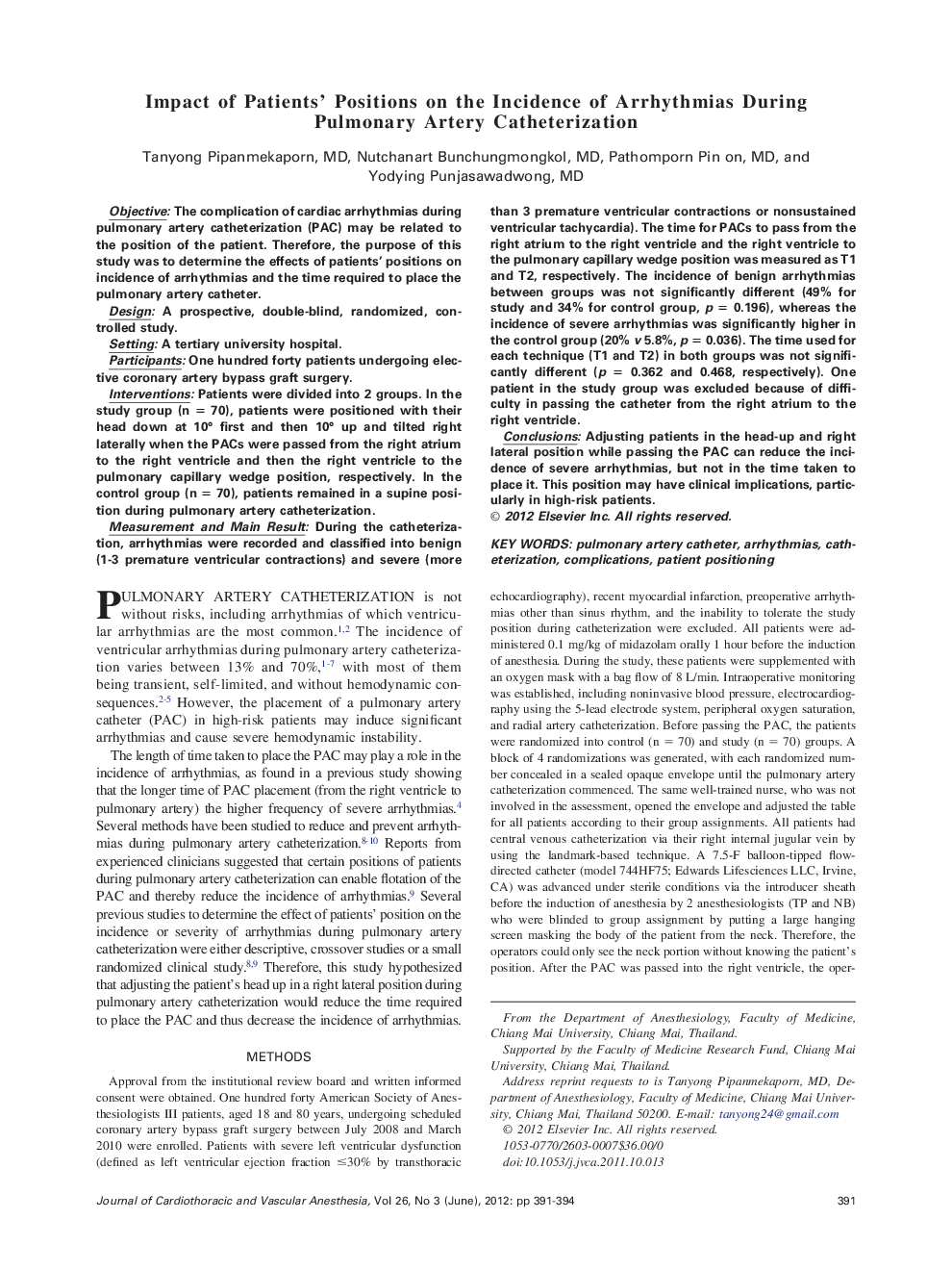| کد مقاله | کد نشریه | سال انتشار | مقاله انگلیسی | نسخه تمام متن |
|---|---|---|---|---|
| 2760484 | 1150174 | 2012 | 4 صفحه PDF | دانلود رایگان |

ObjectiveThe complication of cardiac arrhythmias during pulmonary artery catheterization (PAC) may be related to the position of the patient. Therefore, the purpose of this study was to determine the effects of patients' positions on incidence of arrhythmias and the time required to place the pulmonary artery catheter.DesignA prospective, double-blind, randomized, controlled study.SettingA tertiary university hospital.ParticipantsOne hundred forty patients undergoing elective coronary artery bypass graft surgery.InterventionsPatients were divided into 2 groups. In the study group (n = 70), patients were positioned with their head down at 10° first and then 10° up and tilted right laterally when the PACs were passed from the right atrium to the right ventricle and then the right ventricle to the pulmonary capillary wedge position, respectively. In the control group (n = 70), patients remained in a supine position during pulmonary artery catheterization.Measurement and Main ResultDuring the catheterization, arrhythmias were recorded and classified into benign (1-3 premature ventricular contractions) and severe (more than 3 premature ventricular contractions or nonsustained ventricular tachycardia). The time for PACs to pass from the right atrium to the right ventricle and the right ventricle to the pulmonary capillary wedge position was measured as T1 and T2, respectively. The incidence of benign arrhythmias between groups was not significantly different (49% for study and 34% for control group, p = 0.196), whereas the incidence of severe arrhythmias was significantly higher in the control group (20% v 5.8%, p = 0.036). The time used for each technique (T1 and T2) in both groups was not significantly different (p = 0.362 and 0.468, respectively). One patient in the study group was excluded because of difficulty in passing the catheter from the right atrium to the right ventricle.ConclusionsAdjusting patients in the head-up and right lateral position while passing the PAC can reduce the incidence of severe arrhythmias, but not in the time taken to place it. This position may have clinical implications, particularly in high-risk patients.
Journal: Journal of Cardiothoracic and Vascular Anesthesia - Volume 26, Issue 3, June 2012, Pages 391–394